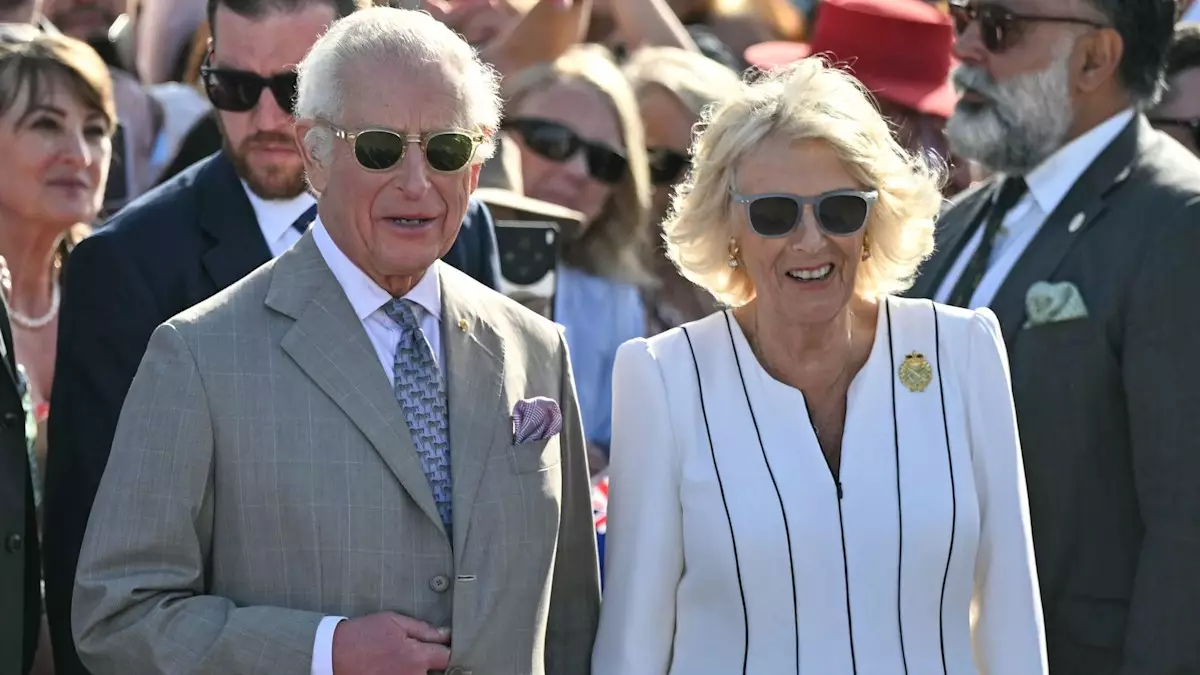In a grand finale to their Australian visit, King Charles III and Queen Camilla made their way to the iconic Sydney Opera House, a decision that echoed previous royal visits and sentiments shared by the monarchy. Their arrival on the bustling steps of this architectural marvel was both a homage to tradition and a modern embrace of public engagement. This moment unfolded amidst crowds eager to witness the royal couple, who have been increasingly seen as a reassuring and stabilizing presence.
The picturesque setting of the Sydney Opera House holds layers of historical significance for the British royal family. The resemblance of this visit to the memorable tour by the Duke and Duchess of Sussex in 2018 evokes sweet nostalgia. Meghan and Harry’s tour was significant not only for its scale but also for the joyful announcement of their first pregnancy just after arriving in Australia. Camilla and Charles, while notably different in their royal backgrounds and styles, appeared to channel the warmth and enthusiasm generated during that previous engagement.
In terms of aesthetics, the royal attire also serves as a distinguishing factor in their public personas. Meghan Markle’s elegant Australian designer ensemble of a white pencil dress and trench coat resonated with the vibrant spirit of Australia at the time. In contrast, Camilla’s sophisticated choices—a white silk dress accentuated with black piping—display an enduring sense of regal fashion, further amplified by her royal brooch that carries historical weight. This juxtaposition highlights not only personal style but the evolving identity of the royal family’s representation in the Commonwealth.
The day’s events were not just ceremonial but highlighted pressing issues, beginning with a fleet review that showcased a striking display of naval strength. This public spectacle not only honors the military history of Australia but also emphasizes the monarchy’s role in supporting and commemorating national pride and togetherness, especially during times of uncertainty. The presence of the Governor-General and Chief of the Defence Force reinforced the occasion’s significance, demonstrating that the royal family continues to be deeply interlinked with Australian governance and military respect.
Furthering their outreach, King Charles III headed to the Melanoma Institute, where he engaged in discussions revealing his personal journey with skin cancer. His willingness to address his health challenges brings understanding to a topic that affects many, showing a compassionate side of the monarchy that resonates with the public. This approach contrasts with the more ceremonial aspects of royal duties and represents a shift towards a monarchy that can empathize with its subjects on personal levels.
Meanwhile, Queen Camilla’s visit to OzHarvest highlights a growing awareness around social responsibility among the royal family. The collaboration between food rescue initiatives speaks volumes about the need for sustainable practices and charitable engagements within Australia. When the monarchy supports such causes, they cast a spotlight on issues that require community attention and action, contributing to the broader discourse on social inequality.
The transitions evident in this royal visit encapsulate the evolving nature of the monarchy as they delve into contemporary issues while remaining rooted in tradition. Each of their public engagements emphasizes a narrative of understanding and responsiveness—a refreshing stance that contrasts sharply with bygone eras of royal detachment.
As King Charles and Queen Camilla prepare to depart for Samoa, their journey marks a significant chapter in continuing royal connections with the Commonwealth. Their visit serves not only as a testament to enduring ties but also a springboard for future engagements that could redefine royal interactions in a modern context, allowing the monarchy to thrive and remain relevant in a rapidly changing global landscape.
Through these interactions, Charles and Camilla demonstrate that the monarchy is committed not just to pomp and formality, but also to genuine, heartfelt connections, addressing challenging themes while maintaining the regal essence expected from their titles.

